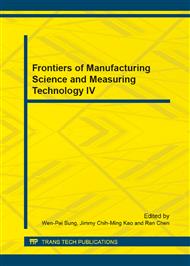p.58
p.63
p.67
p.77
p.81
p.88
p.92
p.96
p.99
Near Net Shape Forming Process of a Titanium Alloy Component Using Hot Isostatic Pressing with Graphite Mould
Abstract:
Ti6Al4V component has been formed by hot isostatic pressing (HIPping) using internal graphite mould with Ni isolation layer. The shape of the graphite had no deformation after HIPping. The Ni isolation layer with a thickness of approximately 5μm on graphite before HIPping was diffused into the dense Ti6Al4V component surface and formed a uniform, compact and crack free layer with a thickness of approximately 100μm after HIPping. The Ni diffusion layer is not damaged after removing the graphite mould by unpolluted sandblasting. The interface topography and the elements diffusion have been assessed and it is found that the non-machined surface of Ti6Al4V component was improved by using graphite mould than those used mild steel. The roughness of non-machined surface after removing the graphite mould by sandblasting is Ra=1.6μm, and the roughness of non-machined surface after removing the mild steel by acid pickling is Ra=10.8μm. It is concluded that graphite mould could be used for the HIPping process to produce complex-shaped components.
Info:
Periodical:
Pages:
81-87
Citation:
Online since:
August 2014
Authors:
Keywords:
Price:
Сopyright:
© 2014 Trans Tech Publications Ltd. All Rights Reserved
Share:
Citation:


